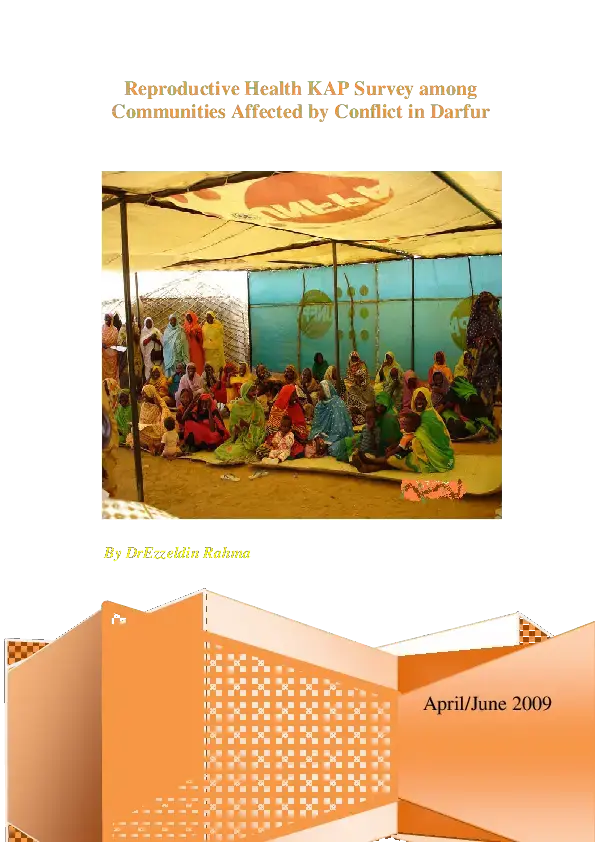The armed conflict in Darfur, which escalated in early 2003, has exploited and brutalized over two million civilian, and further immobilized an already decaying infrastructure. It has caused systematic forced migration of populations across the region estimated at 2.5 million IDPs. Large numbers of displaced women are pregnant, facing delivery under dangerous conditions; others victims of violence including rape. Furthermore, the first half of this year, was marked by continued conflict, resulted in further new displacement of about 137,000 IDPs across Darfur; the expulsion of 13 international NGOs and dissolution of 3 national NGOs. These recent developments have made the situation much more complex and have also had a major impact on humanitarian access to conflict-affected populations. Those displaced through conflict hold no lesser claim to the fundamental right to health and health information than those living in stable situations. Yet there has been strong move towards the introduction of reproductive health IEC and advocacy package in the context of conflicts. However, what methods do these target groups prefer is still based on the planners’ assumptions. Therefore it worthy enough to produce an innovate communication approach that takes into account the prevailing cultural, educational and social contexts be used to inform, educate and communicate with these communities.
Reproductive Health/GBV KAP Survey among Communities Affected by Conflict in Darfur

Publisher
Number of pages
82
Author
Dr. Ezzeldin Rahama
Publications
Reproductive Health/GBV KAP Survey among Communities Affected by Conflict in Darfur
Publication date
01 January 2009

